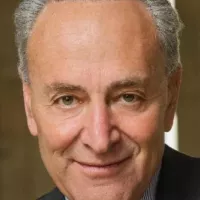In United States parliamentary procedure, a discharge petition serves as a mechanism to extract a bill from a committee and present it to the full legislative body for debate and voting. This process bypasses the typical requirement of a committee report, effectively relieving the committee of its responsibility to further deliberate on the proposed legislation. It is a procedural tool used to force a vote on a bill that may be stalled or blocked in committee.
1910: Introduction of Discharge Petition
In 1910, an early form of the discharge petition was introduced into U.S. House rules. This was part of a series of measures intended to check the power of Speaker Joseph Gurney Cannon.
1925: Change in Pennsylvania Recall Rules
In 1925, Pennsylvania changed its rules for recalling a measure from committee, increasing the required percentage of members from 30 percent to a majority, drastically curtailing the number of recalls.
1931: Discharge Petitions Filed
Between 1931 and 2003, 563 discharge petitions were filed.
1931: Adoption of the Modern Discharge Petition
In 1931, the modern version of the discharge petition was adopted by the 71st House.
1935: Change in Signature Requirements
In 1935, the rules were changed so that the number of signatures required to force a vote on a discharge petition went from one-third of the chamber (145 votes) to an absolute majority (218 votes).
1985: Discharge Petition Filed on Firearm Owners Protection Act
In 1985, a discharge petition was filed on the Firearm Owners Protection Act, known as McClure–Volkmer. The Act was a scaling back of gun control legislation that made it easier for gun shows to operate without government interference. The discharge petition succeeded and the Senate version was passed after minor amendments were added.
1992: Balanced Budget Amendment Receives Signatures
In 1992, the Balanced Budget Amendment received 218 signatures; however, it did not pass the House.
1993: Passage of Discharge Petition Disclosure Bill
In 1993, the Discharge Petition Disclosure Bill was passed by the House, which made the rule change requiring public disclosure of signers. This bill was itself filed with a discharge petition.
1993: Public Disclosure of Signatories
In 1993, the procedure for discharge petitions was changed to make every step of the process public, with signers published in the Congressional Record. This change was spearheaded by then–Rep. Jim Inhofe.
1994: Failure of "A-Z spending cuts" Proposal
In 1994, a strong counter-campaign from the House leadership helped stop the proposal of William Zeliff and Rob Andrews of "A–Z spending cuts"; the proposal received 204 signatures, but could not muster the last 14.
1997: Attempts to Bring Bipartisan Campaign Reform Act
Starting in 1997, several attempts were made to bring the Bipartisan Campaign Reform Act to the floor via the discharge petition.
2002: Passage of Bipartisan Campaign Reform Act
In 2002, the discharge petition was successfully used to pass the Bipartisan Campaign Reform Act, known as McCain–Feingold in the Senate and Shays–Meehan in the House.
2003: Discharge Petitions Statistics
Between 1931 and 2003, out of 563 discharge petitions filed, only 47 obtained the required majority of signatures, the House voted for discharge 26 times and passed 19 of the measures, but only two have become law.
October 2015: Discharge Petition Used to Re-authorize Export-Import Bank
In October 2015, a bipartisan group successfully used a discharge petition to force a vote on a bill to re-authorize the Export-Import Bank of the United States.
May 2024: Freedom Caucus Tax Bill
In May 2024, a Freedom Caucus-headed petition on a disaster relief tax bill received enough signatures and was successfully enacted.
September 2024: Discharge petition to eliminate Social Security benefits reduction
In September 2024, a discharge petition reached the required 218 signatures, bringing forward a bill that eliminated existing provisions that reduced Social Security benefits to some seniors, which was then signed into law.
March 2025: Petition to Allow Proxy Voting Reaches Required Signatures
In March 2025, a petition to make a House rule to allow proxy voting by members who gave birth, or with spouses who did so, reached the requisite number of signatures.
April 2025: Petition on Proxy Voting Tabled
In April 2025, the petition to allow proxy voting was tabled after the House leadership approved rules to establish vote pairing.
Mentioned in this timeline
The United States of America is a federal republic located...
Pennsylvania is a U S state located in the Mid-Atlantic...

A house is a residential building ranging from simple huts...

A bank is a financial institution that plays a crucial...

September is the ninth month of the year in the...

James Mountain Inhofe was a prominent American politician who represented...
Trending

52 minutes ago Japan-China Tensions Rise: Tourism Stocks Plunge Amid Taiwan Spat and Travel Warnings

52 minutes ago Michelle Obama: America 'not ready' for a woman president, cites sexism concerns.

52 minutes ago NASA, Blue Origin Launch Mars Missions: Twin Orbiters & Reusable Booster Deployed.
52 minutes ago Australian and New Zealand schools close after asbestos found in play sand.

53 minutes ago Draymond Green confronts fan over Angel Reese taunts during Warriors-Pelicans game.
53 minutes ago Heavy Rains Cause Flooding and Evacuations in Southern California: What to Know
Popular

Chuck Schumer is the senior United States Senator from New...

XXXTentacion born Jahseh Dwayne Ricardo Onfroy was a controversial yet...

Bernie Sanders is a prominent American politician currently serving as...

Candace Owens is an American political commentator and author known...

Cristiano Ronaldo often nicknamed CR is a Portuguese professional footballer...

Nancy Pelosi is a prominent American politician notably serving as...